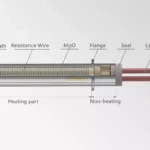Every business relies on its systems to perform seamlessly, but when processes show signs of wear, it may be time to bring in a control integrator. Control integrators specialize in creating efficient, connected systems that allow different components to communicate and operate together smoothly. If your operations feel like they’re running on outdated mechanics or performance feels inconsistent, a control integrator might be the solution to bring your setup up to speed. Let’s dive into some telltale signs that indicate it’s time to call in a control integrator.
Inconsistent Performance Metrics and Unreliable Data Flow
Performance metrics are only helpful if they’re consistent. Inconsistencies in your metrics might not seem like a huge issue initially, but unreliable data flow can severely affect decision-making. For example, when data from one machine fails to sync accurately with another, the result is often confusion, delays, or, worse, costly errors. If you’ve noticed that reporting seems erratic or data doesn’t align across systems, these are clear indicators that integration issues are at play.
A control integrator can design a solution to connect your systems for smooth, reliable data flow. By streamlining how information moves between components, you gain consistent metrics, reducing the guesswork in operations. Consistency also means you can rely on your data when it matters most, whether for everyday decisions or long-term strategic planning.

System Alarms Triggering Without Clear Causes
Alarms are meant to be helpful alerts, not mysteries. But if you’ve got alarms blaring without an obvious cause, it’s likely your systems aren’t integrated as effectively as they could be. False alarms can lead to “alarm fatigue,” where operators ignore all alarms, potentially missing critical warnings. This disconnect often arises when systems don’t communicate effectively or older protocols no longer align with new requirements.
A control integrator can work through these inconsistencies, ensuring alarms only trigger when genuinely needed. They streamline alarm hierarchies and make sure that alerts are purposeful, giving your team peace of mind and a better focus on real issues when they arise. With clearer alarm management, your operations become smoother, and your team can respond to alerts with confidence.
Outdated Interfaces Struggling to Communicate with Modern Equipment
Older systems can struggle to keep pace with new, high-tech machinery. If your interface looks like it belongs in a museum and you’re regularly running into compatibility issues, it’s a sure sign that an upgrade is overdue. Outdated interfaces often create bottlenecks, as operators try to bridge the gap between aging tech and new equipment manually.
Control integrators specialize in updating these connections, ensuring your equipment “speaks the same language.” By modernizing interfaces and enhancing compatibility, a control integrator can create a unified, user-friendly platform. This not only saves time but also enhances accuracy, making daily operations smoother and future upgrades less daunting.
Difficulty Scaling Operations or Adding New Functionalities
Growing your business should be exciting, not frustrating. If your current setup can’t handle scaling up or integrating new functionalities without significant headaches, that’s a strong signal your system needs an expert’s touch. Control integrators help by building scalable systems that can grow with you, whether you’re adding a new production line or upgrading to more advanced technologies.
A system integrator can evaluate your current infrastructure and implement solutions that allow for seamless expansion. With a well-integrated system, you can scale operations without starting from scratch or facing massive downtime. This flexibility makes growth smoother and more sustainable, giving you the tools to expand with confidence.
Increased Downtime with Complex Troubleshooting Processes
If downtime is eating into productivity, and troubleshooting feels like a scavenger hunt, it’s time to call a control integrator. Frequent downtimes often arise from a lack of system integration, which can make diagnosing issues more complex than it should be. When systems operate in silos, pinpointing the exact cause of a problem takes longer, often requiring extensive manual troubleshooting.
Control integrators streamline these processes by creating a connected system that allows for quicker problem diagnosis and resolution. They simplify troubleshooting by reducing the number of steps needed to identify and resolve issues, which means less downtime and a more efficient operation. With a well-integrated system, troubleshooting becomes straightforward, helping keep operations on track.
Redundant or Manual Workarounds Becoming the Norm
If your team is constantly finding “creative” workarounds to get things done, your system likely needs an upgrade. While these manual processes can keep things moving temporarily, they’re a band-aid solution at best. Over time, reliance on redundant or manual tasks can slow productivity and increase the risk of errors, especially as the process scales.
A control integrator can eliminate the need for these makeshift solutions by automating processes and optimizing workflows. By integrating all necessary functions into a cohesive system, a control integrator can streamline operations, reduce redundancy, and free your team to focus on tasks that truly add value.







